
The Steamship William G. Mather(Official Number 224850) is a retired Great Lakes bulk freighter now restored as a museum ship in Cleveland, Ohio, one of four in the Great Lakes region. She transported cargo such as ore, coal, stone, and grain to ports throughout the Great Lakes, and was nicknamed "The Ship That Built Cleveland" because Cleveland's steel mills were a frequent destination.

American President Lines Ltd., along with its parent company CMA CGM, is the world's third-largest container transportation and shipping company, providing more than 80 weekly services.
Malabar may refer to the following :

SS Austria was a steamship of the Hamburg America Line which sank on 13 September 1858, in one of the worst transatlantic maritime disasters of the nineteenth century, claiming the lives of 449 passengers and crew. The Austria was built by Caird & Co. of Greenock, Scotland and was launched on 23 June 1857. She was 318 ft and 2,684 BRT, with three masts and single screw propeller propulsion.

The Pacific Mail Steamship Company was founded April 18, 1848, as a joint stock company under the laws of the State of New York by a group of New York City merchants. Incorporators included William H. Aspinwall, Edwin Bartlett, Henry Chauncey, Mr. Alsop, G.G. Howland and S.S. Howland. These merchants had acquired the right to transport mail under contract from the United States Government from the Isthmus of Panama to California awarded in 1847 to one Arnold Harris.

MS Bore is a combination museum and hotel ship docked permanently in Turku, Finland. She was originally built in 1960 by Oskarshamn shipyard, Oskarshamn, Sweden as the car/passenger ferry SS Bore for Steamship Company Bore, Finland, then the last commercial steam ship built in Scandinavia and the first ferry on the route between Finland and Sweden where cars could drive aboard. She was later known as SS Borea, before being rebuilt as cruise ship in 1988. 1988 to 2010 she was owned by the Finnish shipping company Kristina Cruises and known as MS Kristina Regina until she was retired because she did not comply with new safety regulations.
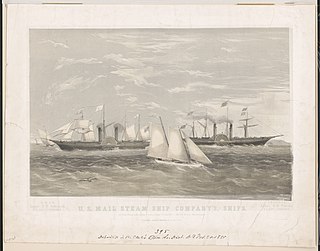
U.S. Mail Steamship Company was a company formed in 1848 by George Law, Marshall O. Roberts and Bowes R. McIlvaine to assume the contract to carry the U. S. mails from New York City, with stops in New Orleans and Havana, to the Isthmus of Panama for delivery in California. The company had the SS Ohio and the SS Georgia built in 1848, and with the purchased SS Falcon in early 1849 carried the first passengers by steamship to Chagres, on the east coast of the Isthmus of Panama. Soon the rapid transit time the steamship lines and the trans isthumus passage made possible when the California Gold Rush began made it a very profitable company.
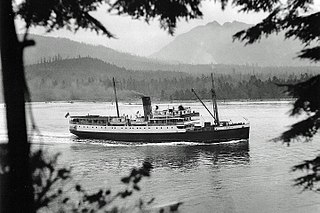
The Union Steamship Company of British Columbia was a pioneer firm on coastal British Columbia. It was founded in November 1889 by John Darling, a director of the Union Steamship Company of New Zealand, and nine local businessmen. The company began by offering local service on Burrard Inlet near Vancouver and later expanded to servicing the entire British Columbia coast. Initially a cross-harbour service with the steamers Senator and Lonsdale, the line was asked to take on more roles, calling in at Howe Sound, Gibsons Landing, and various logging camps and sawmills. The demand outstripped the availability of vessels.

SS Königin Luise was a Barbarossa-class ocean liner built in 1896 by Vulcan Shipbuilding Corp. of Stettin, Germany, for the North German Lloyd line of Bremen.
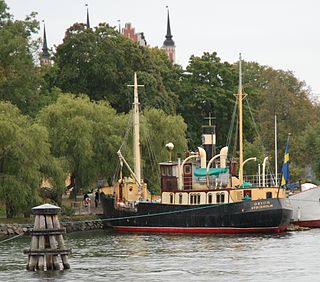
SS Orion is a steel steamship moored on the western shore of the islet Skeppsholmen in central Stockholm, Sweden, now serving as a museum ship.
The Scilly Isles Steam Navigation Company provided shipping services between Cornwall and the Isles of Scilly from 1858 to 1872.
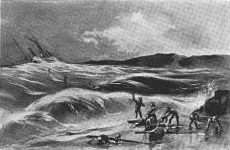
SS Northerner was the first paddle steamer lost in operations by the Pacific Mail Steamship Company.

The Pacific Coast Steamship Company was an important early shipping company that operated steamships on the west coast of North America. It was first organized in 1867 under the name Goodall, Nelson and Perkins. The Goodall, Nelson & Perkins Steamship Company was formed in 1875, but a year later was reorganized as the Pacific Coast Steamship Company. In 1916 the Admiral Line bought the shipping interests of the company.
There have been several vessels named "Ava", including:
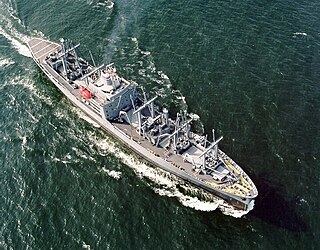
The SS Cape Jacob is a steam turbine-driven ship, first launched as the SS California. It was to be used by the Maritime Administration, and was delivered in 1962 and put under contract to the States Steamship company. The ship was later transferred to the Military Sealift Command, and put into reserve status temporarily. It was then transferred to active duty as a prepositioning ship.
A number of steamships were named Washingtonian, including:

The Type R ship is a United States Maritime Administration (MARAD) designation for World War II refrigerated cargo ship, also called a reefer ship. The R type ship was used in World War II, Korean War, Vietnam War and the Cold War. Type R ships were used to transport perishable commodities which require temperature-controlled transportation, such as fruit, meat, fish, vegetables, dairy products and other foods. The US Maritime Commission ordered 41 new refrigerated ships for the US Navy. Because of the difficulty of building refrigerated ships only two were delivered in 1944, and just 26 were delivered in 1945 and the remainder in 1946–48. The 41 R type ships were built in four groups. Two of design types were modified type C1 ships and two were modified type C2 ships. The United Fruit Company operated many of the R type ships in World War II. The type R2-S-BV1 became the US Navy Alstede-class stores ship and the type R1-M-AV3 became the US Navy Adria-class stores ship.
A number of steamships were named Teutonia, including -
This page is based on this
Wikipedia article Text is available under the
CC BY-SA 4.0 license; additional terms may apply.
Images, videos and audio are available under their respective licenses.













